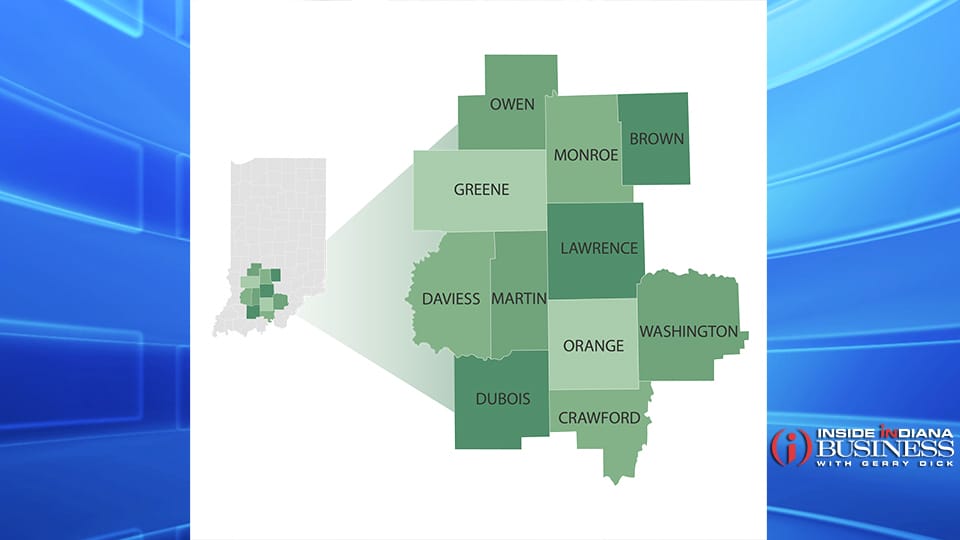Housing study primes Indiana Uplands for future development
Subscriber Benefit
As a subscriber you can listen to articles at work, in the car, or while you work out. Subscribe Now
A new housing study is equipping southern Indiana stakeholders and developers with new information to make informed decisions on how to tackle their housing needs.
The newly released Regional Opportunity Initiatives study was produced to arm the region with current and comprehensive data in hopes to best position communities to address those needs and take advantage of developer and funding opportunities. The effort aligns with the not-for-profit’s mission to improve educational and economic prosperity in the Indiana Uplands region.
“It’s one thing to think you need housing,” ROI president and CEO Tina Peterson said. “It’s another thing to know what housing you need, and in what quantities, and at what price points, and whether rental or owner-occupied.”
Peterson said the need for housing has only grown since the last survey in 2019—a finding they did not expect after the region’s focus on improving the housing stock. It’s not that stakeholders weren’t working on housing, she said, but rather the region at large is growing in several ways, and housing has not kept pace.
“We came to realize that we’d only grown in our need for housing despite all the progress that we’ve made to date,” she said. “It wasn’t anything like what we anticipated.”
Peterson said the second iteration of the study was intended to measure progress, inform goals and create a foundation to target opportunities. They also noticed a range of opportunities where current information would be ideal.
“We were seeing significant opportunity in the region for housing,” Peterson said. “We knew that there was going to be new sources of funding that could potentially support housing, and we wanted to be positioned and prepared with up-to-date information.”
The region needs all housing types, Peterson said. Compared to the last study, she said researchers also found there has been an increase in rental properties and a slight drop in owner-occupied units.
Another takeaway, Peterson said, is how the region as a whole lacks the infrastructure necessary to grow the housing stock as quickly as they’d like. Going forward, she said they are being thoughtful about density placement and where to place housing so as to remain accessible and affordable.
Prior to their effort, Peterson said ROI couldn’t find any organization that had conducted a housing study of that breadth.
The study considers population demographics, projected growth, the economy, transportation and housing costs. It also looked at more niche market characteristics, including housing age, occupancy, housing demand and building permits.
The study not only determined the number of needed units but specifies how many need to be built for a range of incomes. For example, Monroe County’s report specifies Bloomington needs to build 4,155 additional units by 2035 including 819 “affordable low” owner-occupied units and 179 “high market” rentals.
A 13+ page packet was generated for each county, some of which include municipality profiles condensing data and predicting housing needs. The Indiana Uplands region includes Brown, Crawford, Daviess, Dubois, Greene, Lawrence, Martin, Monroe, Orange, Owen and Washington Counties.
Data packets for each county can be found on ROI’s website.
The goal of the study is to get into the hands of communities needing to make informed decisions, Peterson said. To supplement the given data, she said they are also working with stakeholders, especially those in local government, through webinars and education pushes on the more niche topics, like using tax increment financing districts, financing developments and addressing infrastructure needs.
“Part of our goal has been to work with our partners to make sure that this document lives and really serves their purpose,” Peterson said. “We’ve always coupled this with convenings, where we actually bring people together to talk about housing across the region.”
Peterson talks about the action aspect of the housing study and how ROI inspires stakeholders to dig deeper.
In several places, Peterson said they’ve seen incremental change in the short gap between studies. She mentioned an increase in local developers as well as those from outside the region who are inspired by the housing study.
The Cook Medical housing project in Spencer is another bright spot, she said, as well as Dubois County’s rental projects. Another key area of growth is around the WestGate@Crane Technology Park, where she said they are seeing housing development in tandem with local industry growth in microelectronics and advanced technologies.
The study’s release coincides with the second round of the Regional Economic Acceleration and Development Initiative, or READI 2.0, which will divide $500 million to 15 regions to inspire and fund quality of place and infrastructure projects. The Indiana Economic Development Corp. will present its funding recommendations on Thursday.
The data from the first study helped ROI feel ready for the first installment of READI in 2021, Peterson said. This time around, should they receive funding, she said they would use that data to inform their decision-making and identify what housing is needed in the region.
“I feel pretty confident that we’ll use this data once again, to identify what types of housing we need, where we need that housing, and how we might be able to use READI 2.0 funding to help activate the market, leverage relationships and signal demand to developers and communities that this is of incredible importance,” Peterson said.
ROI has not determined how often it will release similar studies in the future, but Peterson said she thinks it will be a practice going forward.
